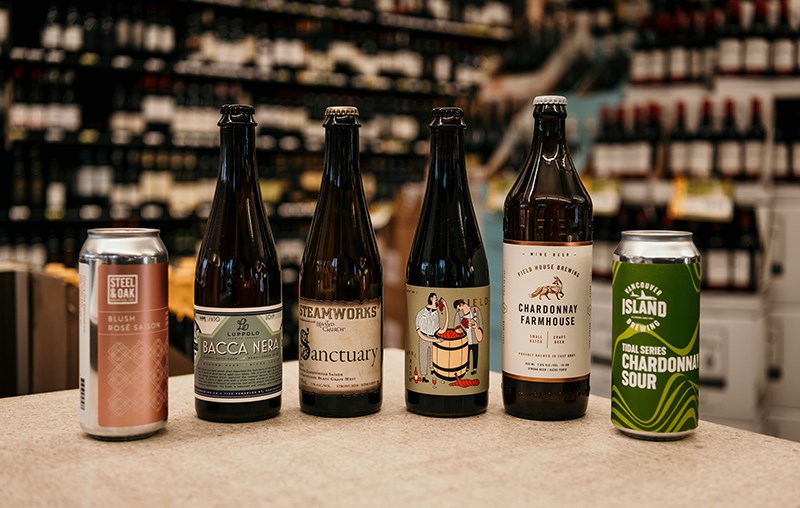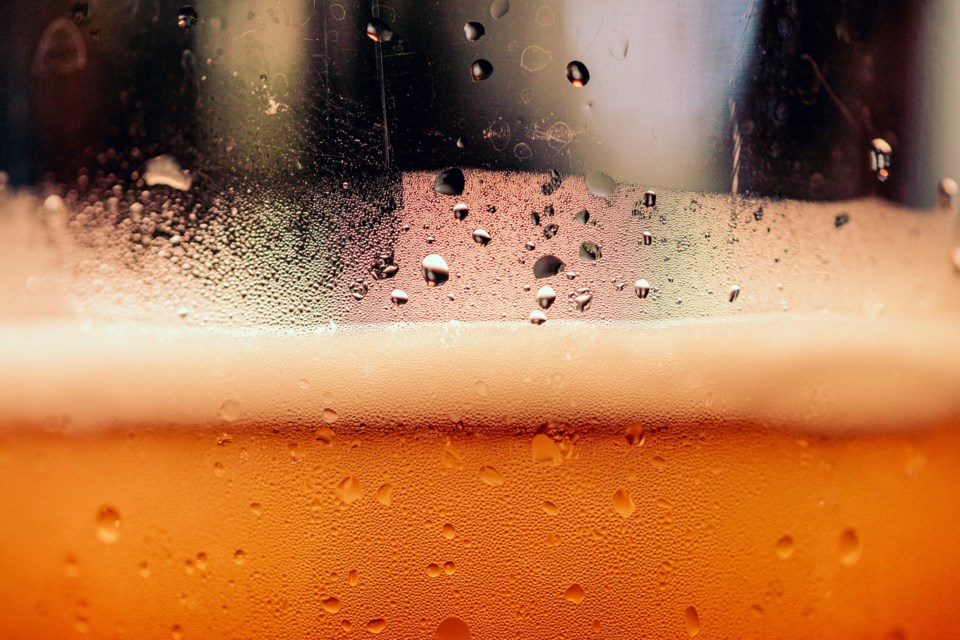Beer and wine have long seemed to inhabit separate worlds. Lately, however, a trend has been bridging those two worlds: wine-beer hybrids. Several B.C. breweries have experimented with them, whether by blending wine and beer, or fermenting grape juice or grape must (freshly squeezed grape juice with skins, seeds and stems still in it) or even just the pomace (the solid portion of the must) along with typical beer ingredients, and often aging them in foeders or barrels.
Some brewers in Italy have been making uva birra or grape beer for more than 15 years already. Italian grape ale, or uva birra, even made it into the “Local Styles” appendix of the 2015 update of the BJCP (Beer Judge Certification Program) guidelines.
According to Italian beer writer, Maurizio Maestrelli, IGA was first brewed commercially at the Barley Brewery in Sardinia, whose founder, Nicola Perra, “has to be considered the father of the Italian grape ale style.” Around 2003, Perra started experimenting with brewing an imperial stout with sapa, a boiled-down concentration of grape must derived from local Cannonau grapes that is often used in desserts. This beer, BB10, is considered the original Italian grape ale, and is still produced by Perra today, along with several other IGAs.
Maestrelli says Gianriccardo Corbo, Italy’s first BJCP-certified beer judge, has identified around 70 different grape ales brewed in Italy today. The intention “is to emphasize the wine contribution rather than other flavours,” Maestrelli explains. “Only a few of them use Belgian or British yeast and very rarely wine yeast.” The hops are intentionally subtle, and they are rarely soured.
With so many different styles of grapes grown in a variety of terroirs in Italy, the flavour possibilities seem limitless.
“The same grape, Chardonnay for example, can be sharp and mineral when it comes from the north and very opulent and round when from the south,” says Maestrelli. “So there can be many differences from an IGA to another because we have this wine variety.”
 The beer/wine hybrid trend started in Italy (of course) with uva birra, a style of beer in which wort is fermented on grape must. Vessel Liquor Store in Victoria carries dozens of examples of the style made right here in B.C., many using local grapes and must. Lara Zukowsky photo
The beer/wine hybrid trend started in Italy (of course) with uva birra, a style of beer in which wort is fermented on grape must. Vessel Liquor Store in Victoria carries dozens of examples of the style made right here in B.C., many using local grapes and must. Lara Zukowsky photo
Here in B.C., grape beers first started showing up about three years ago. Several breweries have dabbled in the style, including Brassneck, Luppolo/Temporal, Twin Sails/Coalesce, Steamworks, Steel and Oak, and House of Funk. But leading the charge has been Field House Brewing in Abbotsford, which has released more than a dozen grape ales.
Parker Reid, head brewer at Field House, said he was first inspired by a beer called Bumo 2 that he tasted at Burdock Brewing in Toronto three years ago. A collaboration with a Niagara winery called Pearl Morissette, it featured a blend of Pinot Noir, Pinot Rosé and one-year-old barrel-aged saison.
“It just blew me away,” Reid remembers, adding that he soon realized “there are so many different grapes and so many different flavours. That was three years ago. We’ve just been experimenting ever since.”
The first one Reid made was Wild Riesling Ale, a collaboration with the head brewer from Dogfish Head, the famously experimental Delaware brewery. It featured Riesling grapes blended with a tart farmhouse ale, elderflower and sweet woodruff, and fermented with wild yeast.
Over the past few years, Reid has learned that there are a few different ways to approach brewing a grape ale. Blending fermented wine and beer is one direction to take, but “you get totally different flavours if you ferment them together.”
By steeping a fermented beer on pomace or must, “you’re going to get totally different flavours. You almost get more peppery notes because of the stems and the skins.”
Wild Brettanomyces yeast on the grape skins has an effect as well.
“We’ll add grape must directly to the foeder or we’ll take a beer that’s primary fermented in steel and then put it on the must to give it some wild character. Or you can put it on the must for a week and just pull flavour and colour from the skins.” Some B.C. breweries have done that to make rosé beers.
Field House’s main winery partner in this endeavour is Whispering Horse in Yarrow, near Chilliwack. Reid’s favourite of their grapes is called L’Acadie, which reminds him of the Nelson Sauvin hop. Speaking of hops, Reid sometimes doesn’t even add hops because the grapes have so much flavour. In other cases they “use hops to accentuate certain flavours.”
Field House would like to work with bunches of whole grapes directly, but they are very expensive and difficult to find, apparently, so the brewery is putting in grapes at its own farm, a project that began in 2018 to support the food program at the brewery. As well, the brewery is moving its entire barrel program and foeders to the farm, which has its own manufacturing licence: the Field House BRRL Room.
It takes two or three years for grape vines to mature enough to bear fruit, so they won’t be making any beers with their own grapes for a while yet. There are already some Concord grapes there, which aren’t typically used in winemaking, but Reid says he’ll still use them in a grape ale at some point. And why not? As the two worlds of beer and wine blend together, the rules are thrown out along with the pomace and trub. All that matters is that the results taste good.
REQUIRED DRINKING
Chardonnay Sour // Vancouver Island Brewing
Alexandria // Strange Fellows Brewing
Ultraviolet Frequency // Temporal Artisan Ales
Sour Noir – Pinot Noir // Field House Brewing
Sanctuary // Steamworks Brewing
Blush Rosé Saison // Steel & Oak
The Good Neighbour // Vice & Virtue
- By Joe Wiebe / The Growler
Read more from The Growler B.C.



